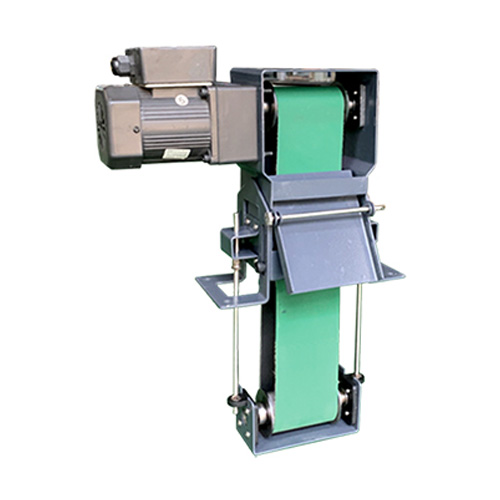-
WhatsAPP: +86 18706448138
-
Tengzhou, Shandong, China

High Voltage Pulse Generator: What You Must Know
High voltage pulse generators are specialized electronic devices designed to produce short, high-intensity electrical pulses.
Table of Contents
Introduction

High voltage pulse generators are specialized electronic devices designed to produce short, high-intensity electrical pulses. These instruments are critical in various scientific, industrial, and medical applications, where precise control over electrical energy is required. Understanding their functionality, applications, and key considerations is essential for professionals and enthusiasts alike. This blog explores the intricacies of these devices, offering insights into their operation, selection, and maintenance to help you make informed decisions.
What Is a High Voltage Pulse Generator?
A high voltage pulse generator creates electrical pulses with amplitudes ranging from hundreds of volts to several kilovolts, typically delivered in nanoseconds to microseconds. These pulses are used to test equipment, drive specialized loads, or conduct experiments requiring rapid energy delivery. Unlike continuous power supplies, these generators focus on delivering energy in short bursts, making them ideal for applications like electromagnetic interference testing, laser driving, and particle acceleration.
Key Components of a High Voltage Pulse Generator
The core components include a power supply, energy storage unit (such as capacitors), switching mechanism (like spark gaps or semiconductor switches), and control circuitry. Each component plays a vital role in ensuring the pulse’s amplitude, duration, and frequency meet the application’s requirements. For instance, the switching mechanism determines how quickly the stored energy is released, directly impacting pulse rise time.
Applications of High Voltage Pulse Generators

These devices find use across diverse fields, showcasing their versatility. In scientific research, they power experiments in plasma physics and particle accelerators. In industry, they test the resilience of electronic components against voltage surges. Medical applications include driving pulsed electric fields for cancer treatment or sterilization. Their ability to deliver precise, high-energy pulses makes them indispensable in these areas.
Scientific Research Applications
In research, a high voltage pulse generator is often used to create controlled plasma environments or to accelerate particles in experimental setups. The precision of these pulses allows researchers to study phenomena that occur at extremely short timescales, advancing fields like nuclear physics and material science.
Industrial Testing and Quality Control
Manufacturers rely on these generators to simulate lightning strikes or electromagnetic pulses, ensuring products like circuit boards and insulators can withstand extreme conditions. This testing is critical for industries like aerospace, automotive, and telecommunications, where reliability is paramount.
How to Choose the Right High Voltage Pulse Generator
Selecting the appropriate device depends on several factors, including pulse amplitude, repetition rate, rise time, and load impedance. Understanding your application’s requirements is the first step. For example, a generator for medical applications may prioritize biocompatibility and precision, while one for industrial testing might focus on robustness and high repetition rates.
Key Specifications to Consider
When evaluating options, consider the following specifications:
- Pulse Amplitude: The maximum voltage the generator can deliver.
- Pulse Width: The duration of each pulse, typically in nanoseconds or microseconds.
- Rise Time: How quickly the pulse reaches its peak voltage.
- Repetition Rate: The frequency at which pulses are delivered.
- Impedance Matching: Ensures efficient energy transfer to the load.
Below is a table summarizing typical specifications for different applications:
| Application | Pulse Amplitude | Pulse Width | Rise Time | Repetition Rate |
|---|---|---|---|---|
| Plasma Research | 10-50 kV | 100 ns – 1 µs | <10 ns | 1-100 Hz |
| EMI Testing | 1-10 kV | 50 ns – 500 ns | <5 ns | 1-1 kHz |
| Medical Pulsed Fields | 5-20 kV | 10 ns – 100 ns | <10 ns | 1-500 Hz |
| Laser Driving | 2-15 kV | 1 µs – 10 µs | <20 ns | 10-100 Hz |
This table provides a general guide, but specific requirements may vary based on your setup.
Safety Considerations for High Voltage Pulse Generators
Working with these devices involves significant risks due to their high-energy output. Proper safety protocols are non-negotiable. Always ensure the generator is properly grounded, use insulated tools, and wear appropriate personal protective equipment. Additionally, maintain a safe distance from the device during operation and follow manufacturer guidelines to prevent electrical shocks or equipment damage.
Training and Certification
Operators should undergo training to understand the device’s operation and associated hazards. Certifications in high-voltage safety can further ensure compliance with industry standards, reducing the risk of accidents.
Maintenance and Troubleshooting Tips
Regular maintenance extends the lifespan of a high voltage pulse generator and ensures consistent performance. Check for signs of wear in components like capacitors and switches, clean dust from circuitry, and verify calibration regularly. If issues arise, such as irregular pulse shapes or reduced amplitude, consult the user manual or contact the manufacturer for diagnostic support.
Common Issues and Solutions
- Irregular Pulses: Often caused by faulty switches or degraded capacitors. Replace worn components.
- Overheating: Ensure proper ventilation and check for overloaded circuits.
- No Output: Verify power supply connections and inspect fuses or circuit breakers.
Advancements in High Voltage Pulse Generator Technology
Recent innovations have improved the efficiency and precision of these devices. Modern generators use solid-state switches, like MOSFETs or IGBTs, for faster switching and greater reliability compared to traditional spark gaps. Additionally, digital control systems allow for programmable pulse parameters, enhancing flexibility in complex applications.
Future Trends
The future of high voltage pulse generators lies in miniaturization and integration with IoT systems. Compact designs are making these devices more accessible for portable applications, while smart diagnostics enable real-time monitoring and predictive maintenance, reducing downtime.
Environmental and Regulatory Considerations

Using these devices responsibly involves adhering to environmental and regulatory standards. Dispose of obsolete components, like capacitors containing hazardous materials, according to local regulations. Additionally, ensure compliance with electromagnetic compatibility (EMC) standards to prevent interference with nearby equipment.
Global Standards and Certifications
Certifications like CE, UL, or IEC ensure a generator meets safety and performance standards. Always verify that your device complies with regulations in your region to avoid legal or operational issues.
Conclusion
High voltage pulse generators are powerful tools that drive innovation across industries. Their ability to deliver precise, high-energy pulses makes them invaluable for research, testing, and medical applications. By understanding their functionality, selecting the right model, and following safety protocols, you can maximize their potential. Ready to explore how a high voltage pulse generator can elevate your work? Contact us today to find the perfect solution for your needs.
FAQ
What is the typical lifespan of a high voltage pulse generator?
With proper maintenance, these devices can last 10-15 years, depending on usage intensity and component quality.
Can a high voltage pulse generator be used for low-voltage applications?
Yes, but it may require additional circuitry to step down the voltage, which could affect efficiency.
How do I ensure compatibility with my existing equipment?
Check impedance matching and pulse specifications. Consult with the manufacturer to confirm compatibility.


